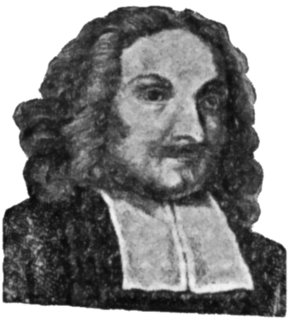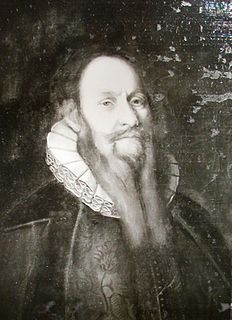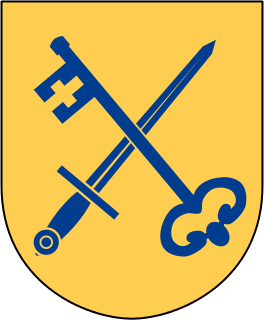Related Research Articles

John III was King of Sweden from 1569 until his death. He was the son of King Gustav I of Sweden and his second wife Margaret Leijonhufvud. He was also, quite autonomously, the ruler of Finland, as Duke John from 1556 to 1563. In 1581 he assumed also the title Grand Prince of Finland. He attained the Swedish throne after a rebellion against his half-brother Eric XIV. He is mainly remembered for his attempts to close the gap between the newly established Lutheran Church of Sweden and the Catholic church, as well as his conflict with, and murder of, his brother.

The Early Vasa era is a period that in Swedish and Finnish history lasted between 1523–1611. It began with the reconquest of Stockholm by Gustav Vasa and his men from the Danes in 1523, which was triggered by the event known as the Stockholm Bloodbath in 1520, and then was followed up by Sweden's secession from the Kalmar Union, and continued with the reign of Gustav's sons Eric XIV, John III, John's son Sigismund, and finally Gustav's youngest son Charles IX. The era was followed by a period commonly referred to as the Swedish Empire, or Stormaktstiden in Swedish, which means "Era Of Great Power".

Laurentius PetriNericius was a Swedish clergyman and the first Evangelical Lutheran Archbishop of Sweden. He and his brother Olaus Petri are, together with the King Gustav Vasa, regarded as the main Lutheran reformers of Sweden. They are commemorated by the Evangelical Lutheran Church in America on 19 April.

Olof Persson, sometimes Petersson, better known under the Latin form of his name, Olaus Petri, was a clergyman, writer, judge, and major contributor to the Protestant Reformation in Sweden. His brother, Laurentius Petri, became the first Evangelical Lutheran Archbishop of Sweden.

The Archbishop of Uppsala has been the primate of Sweden in an unbroken succession since 1164, first during the Catholic era, and from the 1530s and onward under the Lutheran church.

Johannes Magnus was the last functioning Catholic Archbishop in Sweden, and also a theologian, genealogist, and historian.
Andreas Laurentii Björnram, also known as Bothniensis, Bureus which he called himself in honor of his mother's family, was Archbishop of Uppsala in the Church of Sweden from 1583 to his death. He was born in 1520, being the last Archbishop of Uppsala to have been born before King Gustav Vasa decreed Lutheranism to be the official state religion of the Kingdom of Sweden in 1531 during the Lutheran Reformation.

Laurentius Paulinus Gothus was a Swedish theologian, astronomer and Archbishop of Uppsala.

Laurentius Andreae was a Swedish Lutheran clergyman and scholar who is acknowledged as one of his country's preeminent intellectual figures during the first half of the 16th century. In his time he was most renowned as one of the main proponents of the Swedish reformation of 1523-31.

The Diocese of Strängnäs is a part of the Lutheran Church of Sweden and has its seat in Strängnäs Cathedral in Strängnäs, south of Lake Mälaren. The diocese is made up of the two provinces Närke and Södermanland.

Laurentius is a Latin given name and surname that means "From Laurentum" . It is possible that the place name Laurentum is derived from the Latin laurus ("laurel"). People with the name include:
Paulus Petri Juusten (Finnish: Paavali Juusten, Swedish: Paul Pedersson Juusten; ca. 1516 at Viborg, Sweden – 22 August 1575 in Åbo, Sweden was the first Bishop of Viipuri, and later, Bishop of Turku. He was an esteemed teacher and a Swedish royal envoy.
The Uppsala Synod in 1593 was the most important synod of the Lutheran Church of Sweden. Sweden had gone through its Protestant Reformation and broken with Roman Catholicism in the 1520s, but an official confession of faith had never been declared.
The Swedish Church Ordinance of 1571 was the first complete Swedish church order following the Swedish Reformation in the 1520s.

The Reformation in Sweden is generally regarded as having begun in 1527 during the reign of King Gustav I of Sweden, but the process was slow and did not end definitively until the Uppsala Synod of 1593 and the following War against Sigismund, with an attempted counter-reformation during the reign of John III (1568–1592).
Events from the year 1530 in Sweden
Events from the year 1529 in Sweden
Events from the year 1579 in Sweden
The Liturgical Struggle was the name for the period from 1574 until 1593 in Sweden, when there was a struggle about the confession of faith and liturgy of the Church of Sweden, brought about by the attempts of King John III of Sweden to make the Swedish church take a mediating position between Catholicism and Protestantism by holding only certain doctrines and practices which could be established immediately in either the Word of God or patristic writings, similar to what had once been imposed on the Lutheran areas in Germany during the Augsburg Interim. The struggle began in 1574, when the king introduced some new rules in the liturgy which were not in accordance with Lutheran doctrine and practice, followed by his publication of the Liturgia Svecanæ Ecclesiæ catholicæ & orthodoxæ conformia commonly called the "Red Book", which re-introduced a number of Catholic customs. The Liturgical Struggle ended with the Lutheran confession of faith at the Uppsala Synod in 1593.
Jonas Magni Wexionensis was a Swedish prelate who was a professor and head of Uppsala University and served as Bishop of Skara from 1640 till 1651.
